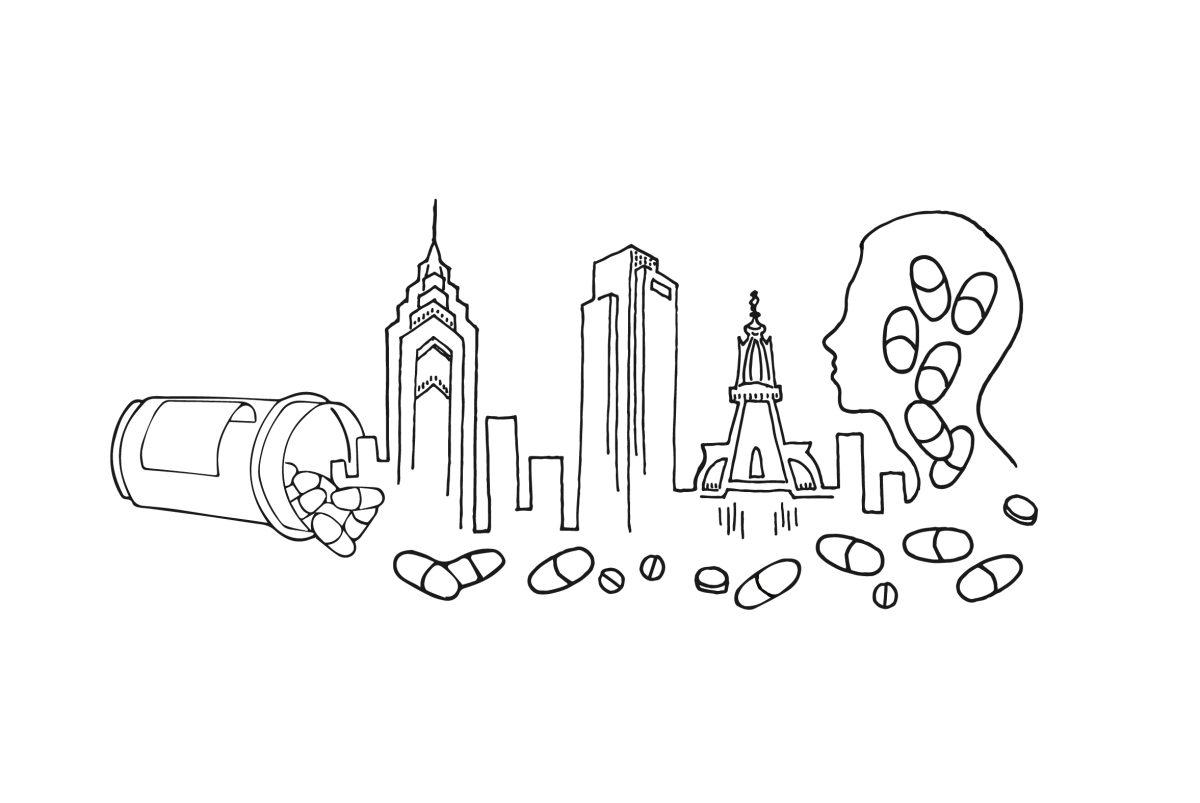What you should know about drug companies and the opioid crisis
The number of Americans dependent on prescription opioids has skyrocketed in the past decade, in part due to the impact medical advertising and Big Pharma has on the population, according to a report by Drugwatch, a for-profit website whose vision is to “become the watchdog for the pharmaceutical and medical device industries.”
In 2015, 276,000 people were using pain reliever without a prescription, according to the National Institutes of Health, a medical research center based in the U.S.
What is Big Pharma?
“Big Pharma” is the nickname given to the big pharmaceutical industry and its trade group, Pharmaceutical Research and Manufacturers of America (PhRMA). The term carries a negative connotation, as it is generally used to describe the world’s major pharmaceutical companies and the critique that Big Pharma prioritizes profit over patient health.
Biggest drug companies making opioids
Purdue Pharma, Janssen Pharmaceuticals (owned by Johnson and Johnson), Depomed, Insys Therapeutics, and Mylan are the biggest opioid manufacturers.
What have these companies been doing?
According to Drug Watch, drug companies are often heavily involved with testing their own products before they are approved by the Food and Drug Administration (FDA).
For example, a report by Drug Watch shows that, in a 2014 study by John Hopkins University, pharmaceutical companies funded 6,550 clinical trials, while the National Institutes of Health (NIH) funded only 1,048. Furthermore, clinical trials are often designed and run by people who are already on the company’s payroll, according to Drugwatch.
In effect, a patient may not be fully aware of the negative side effects or potential addictive properties of a drug until it is too late.
How did we get into this situation?
According to an investigation by The Guardian, Purdue Pharma is a recurring name in the current public-health crisis. Purdue Pharma is owned by Arthur, Mortimer and Raymond Sackler brothers, who started the pharmaceutical company in 1892. Forbes Magazine estimates that the Sacklers are worth around $13 billion.
The Sacklers are attached to multiple philanthropy groups, most notably their own Sackler Family Foundation, which gives grants for global development.
Purdue Pharma is the creator of OxyContin, generically known as oxycodone, and and prescription opioids, OxyContin, HysinglaER and Butrans. Purdue Pharma also produces sleep aids, laxatives and dietary supplements.
According to the Guardian, Purdue began marketing directly to doctors, offering handsome benefits to those who would promote the drug to their patients.
The fentanyl factor
From 2015 to 2017, Pennsylvania experienced an 83 percent increase in opioid-related deaths. According to the Centers for Disease Control and Prevention (CDC), this jump in the death rate can likely be attributed to the increase in the availability of illegally obtained fentanyl, used as a cheap means to dilute drugs such as cocaine or heroin.
According to the CDC, “Pharmaceutical fentanyl is a synthetic opioid pain reliever, approved for treating severe pain, typically advanced cancer pain. It is 50 to 100 times more potent than morphine. It is prescribed in the form of transdermal patches or lozenges and can be diverted for misuse and abuse in the United States.”
While illicitly manufactured fentanyl (IMF) has been linked to the most recent fentanyl-related overdoses and deaths, pharmacetical fentanyl has a number of beneficial medical purposes, according to Donald Leitner, Ph.D., professor and chair of the psychology department.
“Used appropriately,” Leitner said, “it is a very effective painkiller, but you need a physician who knows what they are doing, and you need pharmaceutical grade preparation which has been very carefully made so that it doesn’t cause problems for the person taking it.”
While fentanyl can be beneficial, the ever increasing presence of illegal fentanyl has become the leading killer among all drugs in Pennsylvania, accounting for approximately 25 percent of drug related deaths in Pennsylvania, according to the Drug Enforcement Administration (DEA).
What makes fentanyl so potent?
There are two main factors to a drug that make it more or less physiologically active. The first has to do with how the chemical interacts with certain brain receptors. The second is the level of fat solubility of certain chemicals.
According to Leitner, fentanyl interacts with brain receptors similarly to many other opioids. The faster the drug is able to permeate the cell membrane, the more intense the effect of the drug.
“The interesting thing about fentanyl is that it is incredibly fat soluble,” Leitner said. “There are a bunch of opioids, such as codeine, that in general seem to have more or less the same activity in the receptors in the brain where they do their thing. The opioids tend to differ in how quickly they get into the brain, and the more intense the effect, the more fat soluble in general the chemical is.”
As a result, the brain gets concentrated with fentanyl very quickly, Leitner said. “That causes all sorts of problems, because it just shuts down systems in the brain much more efficiently than other chemicals which are not as fat soluble,” Leitner said.















































